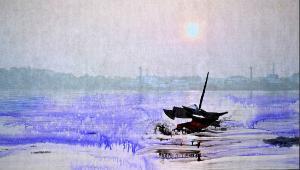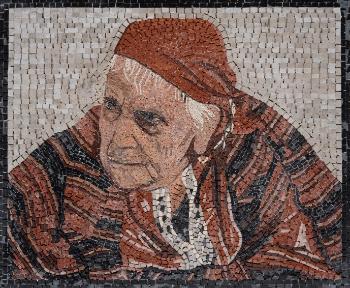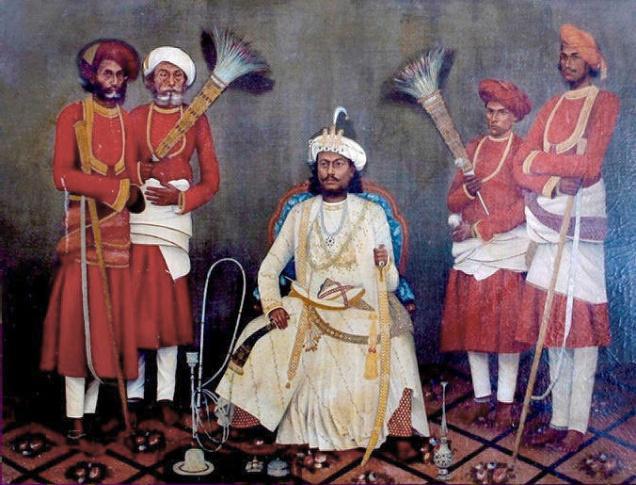Heritage, urban studies and development

Our Lab explores cultural heritage, sustainability, and strategies of survival, largely in South Asian urban and coastal contexts. There is a special focus on the challenges confronting heritage-minority communities in the context of their built environment, economic development, cultural heritage and well-being.
Heritage-minority communities can include people like the Hindu deity-sculptors of Kumartuli in Kolkata, and Siliguri (West Bengal, India) and of Dhaka and Barisal in Bangladesh; the tiny Baghdadi Jewish community of Kolkata, and other dwindling and declining diaspora peoples in that city, especially the Armenian and Chinese. There are also the Jewish heritage sites of Kerala that preserve the memory of the Malabar Jews. These are peoples and communities of a minority heritage that are not necessarily either ethnic minorities or cultural minorities: the challenges therefore present differently from those that affect ethnic and cultural minorities.
The objective of this Lab is to bring together specialists across the discplines to explore shared interests, questions, concerns, and topics. Our aim is to identify ways of enriching the existing research environment in South Asian studies and to develop a sustainable University of Glasgow network in these fields from which new themes of collaborative research can emerge.
EVENTS 2024
Monday 2 September, 1730 to 1900 hrs
THE STORY OF THE CELESTIAL FLOWER
as told by Ōṭṭaṉ Tuḷḷal Manaloor Gopinath
Performing Artist: Mr Manaloor Gopinath
Venue The Mazumdar-Shaw Advanced Research Centre (ARC), Room 237b–c
![]()
Summary
This performance displays the dynamic Ōṭṭaṉ Tuḷḷal, a unique South Indian storytelling tradition. Renowned artist Manaloor Gopinath will bring to life the epic tale of Bhīma's quest for the Celestial Flower, blending humour, drama, and social commentary. Through intricate hand gestures and powerful vocals, he embodies a range of characters, offering a window into this ancient art form from Kerala. Dr Ophira Gamliel (Senior Lecturer in South Asian Religions) will provide historical context, followed by a Q&A session.
Further details
Ōṭṭaṉ Tuḷḷal is a traditional South Indian performance genre featuring a solo artist telling stories from the South Asian epics, the Mahābhārata and the Rāmāyāṇa, in the Malayalam language. This art form was developed in the eighteenth century by the poet and satirist Kunchaṉ Nambiar branching off a centuries-old tradition of temple theatre performances of the Malabar Coast. These South Asian theatrical traditions are all grounded in India’s dramaturgical knowledge systems going back to the early centuries of the common era and known as Nāṭyaśāstra, “Performance Science” or dramaturgy.
The origins of Ōṭṭaṉ Tuḷḷal are attributed to the offensive behaviour of a cākyar (actor) towards a nambiyār (drummer), who fell asleep during the cākyar’s performance. The cākyar ridiculed the sleeping drummer so badly, that the next day the nambiyār performed an act to ridicule the cākyar in turn. That was Kunchaṉ Nambiar, whose story-telling skills and energetic performance style attracted a bigger audience than the cākyar’s.
Ōṭṭaṉ Tuḷḷal is more than an entertaining performance style; it is also an act of defiance against abusive behaviours by superiors. Kunchaṉ Nambiar’s poetry is designed so as to convey messages of social justice, inclusivity, and mutual care. The story of the Celestial Flower, based on the Mahābhārata, tells the story of Bhīma, wreaking havoc on the forest in search of a celestial flower on behalf of his beloved wife, Pañcāli. To teach him a lesson, his half-brother Hanuman, the monkey god, takes the form of an elderly, feeble monkey lying on the road. Bhīma finds he cannot move the tail of the monkey despite his power and might and is humbled. The story ends with a hug between the brothers who never met before, a hug of fraternity between the human and non-human worlds.
Mr Gopinath will perform this story in the traditional way of role-switching, whereby the actor presents all the characters of the story, signalling the identity of the character by using sign language of hand gestures (mūdra). The performance will be preceded by a 10-minute talk by Dr Ophira Gamliel (Theology & Religious Studies) on the background of this unique performance form and the story. It will be followed by a short demonstration of the hand and facial gestures representing each character. Mr Gopinath will then perform selected episodes and verses from Kunchaṉ Nambiar’s story of the Celestial Flower (kalyāṇasaugandhikam). The story synopsis will be made available prior to the performance to assist with following the story line. A Q&A session will follow the performance.
About the artist
Mr Gopinath has been practising and teaching the Ōṭṭaṉ Tuḷḷal art form for the past 36 years, after training under the maestro Kalamandalam Gopinathaprabha at the Kerala Kalamandalam, the most established school of the performance arts in the state of Kerala. Among his teachers are also Kalamandalam Parameswaran and Guru Pazhuvil Gopinath. Mr Gopinath performed all over India, as well as in the UK, Hong Kong, Qatar, Oman, UAE and Malaysia, and his performances are in high demand in the most prominent temples in Kerala such as the famous 14th-century Guruvayur temple. He has also used his skills and knowledge to choreograph a special Ōṭṭaṉ Tuḷḷal for the Kerala Government Health Department to promote awareness on Leprosy. He has won numerous awards and honours from various governmental, national, and international organisations in India and abroad.
You can see a Malayalam-language news report about this performance online at https://youtu.be/BzRoT1-Q9Vc?si=AZhcdUt2SqkoAyRP
Tuesday 8 October, 1600 to 1730 hrs
CONTEMPORARY ARCHAEOLOGY IN TUNISIA: AN ATRIST'S TALK
Rafram Chaddad

Venue: Mazumdar-Shaw Advanced Research Centre (ARC), Room 223
Hybrid Link for Zoom: https://uofglasgow.zoom.us/j/88940956601?pwd=eXBB5Tp0zFBFZUxNWROKPZBqy5LT0s.1&from=addon
Co-hosted with the TRS Research Cluster: Religion, Challenge and Change
The artist Rafram Chaddad talks about shared aesthetics and fish ceremonies, identity and future possibilities from the perspective of contemporary Jewish life in Tunisia.
Chaddad’s work is an exploration into Tunisian Jewish history through art practice undertaken over the past decade in Tunisia. His work is biographical and deals with contemporary life and shared aesthetics, photography, textiles and figures. His artist’s talk will discuss ideas at the heart of current events, Jews in the Islamic world, power relations between national ideas and personal identity through artworks, food and photography.
Born on Djerba in 1976, an island off the coast of southern Tunisia, Rafram Chaddad is an artist whose photographs, films, and multi-media installations rethink the archive, migration narratives, and what it means to belong. His work makes the familiar strange and the strange familiar.
Since 2019, Chaddad has been conducting research for Leftovers, an upcoming book investigating how food practices in cities formerly occupied by the Ottoman Empire are inter-connected. The book highlights recipes particular to each place and oral histories around food-making that challenge the nationalization of food and encourage us to approach food as a shared experience.
Based in Tunis, Rafram’s work reflects on his personal life experiences and comments on broader socio-political issues including migration and displacement, identity and belonging.
In 2023, Rafram published an artist's book entitled 'The good seven years', a semi-retrospective of the first seven years of his artistic practice in Tunisia.
Over the past twenty years, he’s created dozens of short films and installations, which have exhibited worldwide in cultural institutions, galleries, and museums, including: Kunst im Tunnel, Dusseldorf; Kunstraum, New York; Kayu Lucie Fontaine Gallery, Bali; Lucie Fontaine, Milan; ArteEast foundation, New York; Halle 14, Leipzig; and Zalatimo, east Jerusalem. Chaddad has held solo shows at B7L9, Mucem Museum in Marseilles and the Maximilian Forum in Munich. In 2021 Chaddad was a guest critic in the MFA program of Columbia University.
Wednesday 16 October, 1600 to 1730 hrs
AFRICAN CONTINUITIES IN SOUTH ASIA: ENRICHING THE POLITICAL, ECONOMIC AND CULTURAL LANDSCAPE
Professor Shihan de Silva Jayasuriya PhD FRAS
Institute of Commonwealth Studies, University of London
Lucy Cavendish College, University of Cambridge
Venue: 4 Professors’ Square, Upper Seminar Room 305, University of Glasgow
Zoom link for remote participation: https://uofglasgow.zoom.us/j/86943001084?pwd=UauZMgFerKE6uaJQg2zLeGRiZQv01t.1
Co-hosted with the TRS Research Cluster: Religion, Challenge and Change

While Africans migrated freely across the Indian Ocean eastwards, our episteme is mostly of involuntary movement of enslaved Africans. Notwithstanding, Africans ruled two Indian states until after India’s independence. In contemporary India, Afrodescendants are dispersed throughout several states, and integrated into a multilingual multiethnic milieu. In the southern Indian state of Karnataka, for example, their agency is manifested through entrepreneurships of Sidis (name by which most Indians of African descent are known today) who have benefitted from the Scheduled Tribe status and Special Area Games (SAG), a sports promotion scheme of the Sports Authority of India (New Delhi). In neighbouring Sri Lanka, as public spaces become arenas to display cultural heritage, an Afrodescent community have negotiated a space for themselves through manja, chant-like singing accompanied by remembered rhythms and embodied dance movements. Narrations of their oral histories include stories of their African ancestors serving the colonists as soldiers. Inevitably, enslavement is also part of their histories. The status of the soldiers, however, is uncertain given the longue durée over which African soldiers are visible in the historical record. Three forms of music and dance play out the African-Asian connections – kaffrinha, manja, baila. Multiple narratives of Africans emerge through frescoes and the cultural landscape. Although the fates of Afrodescendants in contemporary South Asia vary, they share common problems as small minorities in multiethnic countries. This presentation considers the variety of ways Afrodescendants have empowered themselves and enriched the political, economic and cultural landscape of South Asia.
Biography
Professor Shihan de Silva Jayasuriya (PhD, FRAS) is a Senior Associate at Lucy Cavendish College, University of Cambridge and a Senior Research Fellow at the Institute of Commonwealth Studies, University of London. Her work and research cuts across several disciplines—history, sociology, performing arts, literature and language. She is a Discretionary Associate at the Faculty of History, University of Oxford, a Visiting Professor at the University of the Visual & Performing Arts, Colombo, Sri Lanka and a Collaborative Researcher, Department of Sociology, University of Colombo. She published many books and articles on Sri Lankan history, cultures, and languages. Her most recent publication is Global Portuguese: Literary, Historical, Sociolinguistic and Anthropological Approaches, co-edited with Stefan Halikowski-Smith (Leiden: Brill, 2024). Among her numerous publications, are articles and book chapters on the connected history of Africa and South Asia:
De Silva Jayasuriya, Shihan. Safeguarding Afro-Sri Lankan Intangible Cultural Heritage. In: Sustaining Support for Intangible Cultural Heritage. Newcastle-upon-Tyne: Cambridge Scholars Publishing. Eds: Shihan de Silva Jayasuriya, Mariana Pinto Leitão Pereira and Gregory Hansen. Newcastle-upon-Tyne: Cambridge Scholars Publishing (2022).
De Silva Jayasuriya, Shihan. Africa in South Asia: Hybridity in Sri Lankan Kaffrinha. South Asian History and Culture (2020) 11(4): 390-406.
De Silva Jayasuriya, Shihan. Indians of African Descent: Emerging Roles and New Identities. Journal of African Diaspora Archaeology & Heritage 4(1): 1-18 (2015).
De Silva Jayasuriya, Shihan. Postcolonial Innovations in Sri Lankan Popular Music: Dynamics of Kaffrinha and Baila. International Journal of the Institute of Ethnic Studies Sri Lanka II: 1: 1-29 (2013).
Image and source: Nawab Ibrahim Mohammad Yakut Khan II of Sachin (1833–1873)
EVENTS 2020
Workshop: LIVED HERITAGE AND COMMUNITIES OF MINORITY HERITAGE IN THE INDIAN URBAN CONTEXT
Wednesday 4 November, 1200 to 1315 hrs
- John Reuben Davies (School of Humanities, College of Arts): The heritage-minority communities of Kolkata
- Ophira Gamliel (School of Critical Studies, College of Arts): The lost Jew Town of Cochin
- Preeti Dagar (School of Education, College of Social Sciences): Sustainable livelihoods and social integration through skills development for urban refugees
Can the increased visibility of cultural heritage – the entire gamut of performative elements, folklore, craft-lore, rituals – diminish the trauma and threats to cultural memory, belief-systems, and overall well-being that result from internal displacement and migration? How can fundamentally different heritage-minority communities survive – even grow – in a homogenising and identity-politicised urban world while also highlighting their diversity? What are the effects of intersecting gender, class, ethnic, racial and religious identities of refugees on their employment opportunities, social freedoms and livelihood outcomes? This workshop will address these and other questions in the context of Indian urban settings. Three short presentations will seek to stimulate further ideas, discussions and collaborative work.
To register, please email john.r.davies@glasgow.ac.uk
Research Seminar: URBAN HERITAGE AND CLOSE-QUARTERS LIVING
Thursday 10 December, 1500 to 1630 hrs
Joint event with the Urban Studies Seminar Series.
- Dr Michael Rapport (University of Glasgow): Close-quarters Living, Tuberculosis and Urban Renewal in Belle Époque Paris
- Dr Bishnupriya Basak (University of Calcutta): Kumartuli – the Making of Heritage, Art and Public in an Indian Cityscape
- Professor Samir Kumar Das (University of Calcutta): Pandemic and Pratimashilpa: Negotiating Heritage in Times of Crisis
Register via https://www.eventbrite.co.uk/e/124291093005
For further details, go to
BOOK PUBLICATION
With the news that UNESCO has inscribed Durga Puja in the Representative List of the Intangible Cultural Heritage of Humanity we are pleased to highlight the publication of The Making of Goddess Durga in Bengal: Art, Heritage and the Public (Singapore: Springer, 2021). Access to the eBook is via the publisher or through Glasgow University Library.
The Making of Goddess Durga is the result of a small project co-ordinated by John Reuben Davies (University of Glasgow), Professor Samir Kumar Das and Dr Bishnupriya Basak (University of Calcutta), who also edited the book. The project was funded by Arts Lab and the University of Glasgow’s International Partnership Development Fund.
This collection of studies draws attention to the diverse questions and challenges arising from the art and heritage of Kumartuli, the Kolkata neighbourhood which forms the hub for the making of the pratimas (religious sculptures) at the heart of the religious festival. There is also a case study on the celebration of Durga Puja and other aspects of Bengali culture in Glasgow.
Resonating strongly with our Arts Lab Theme, ‘Heritage, Urban Studies and Development’, the focus of the book is not so much on cities but cityscapes; on genealogies as chance coincidences, conjunctures and accidents and not on a flat and linear history; on iconography not as a study in execution of scriptural formulations but on how innovations are continuously accommodated within a system of rules and vice versa; and finally on how the heritage of idol making brings the public into existence and on the intricate yet problematic relation that exists between the two.

